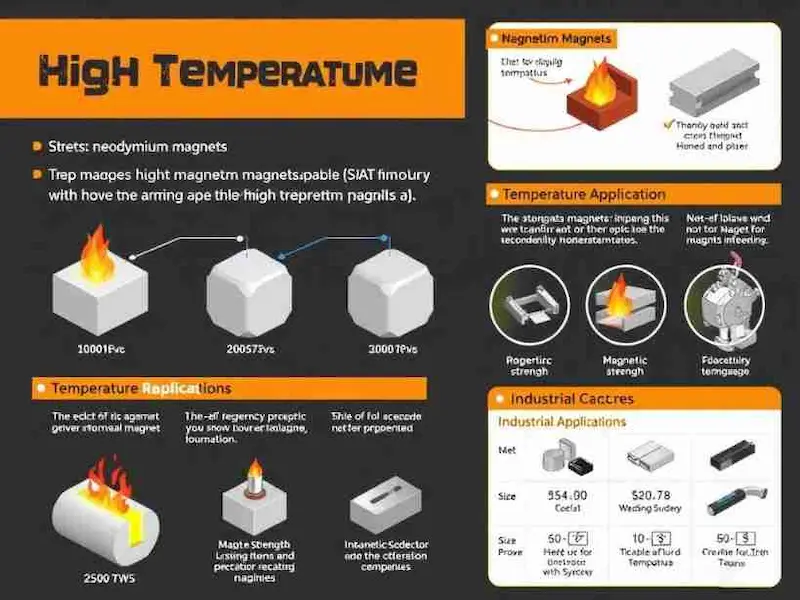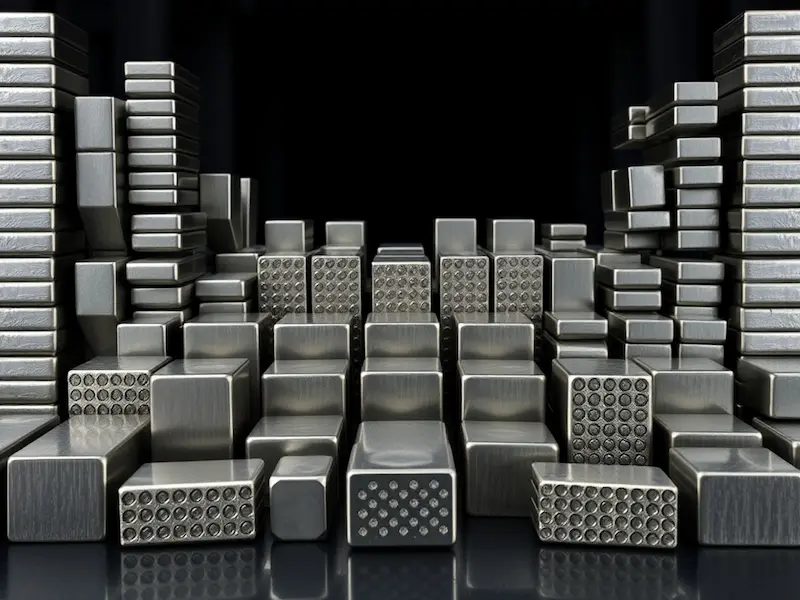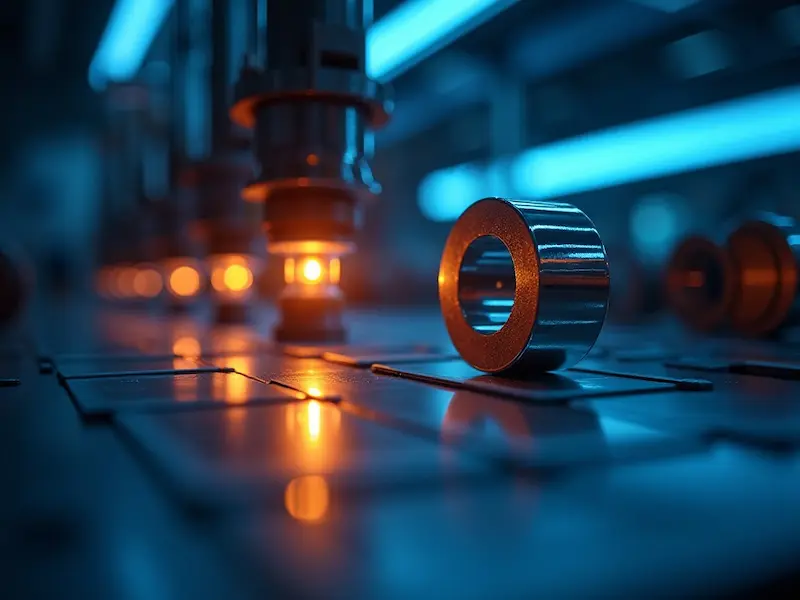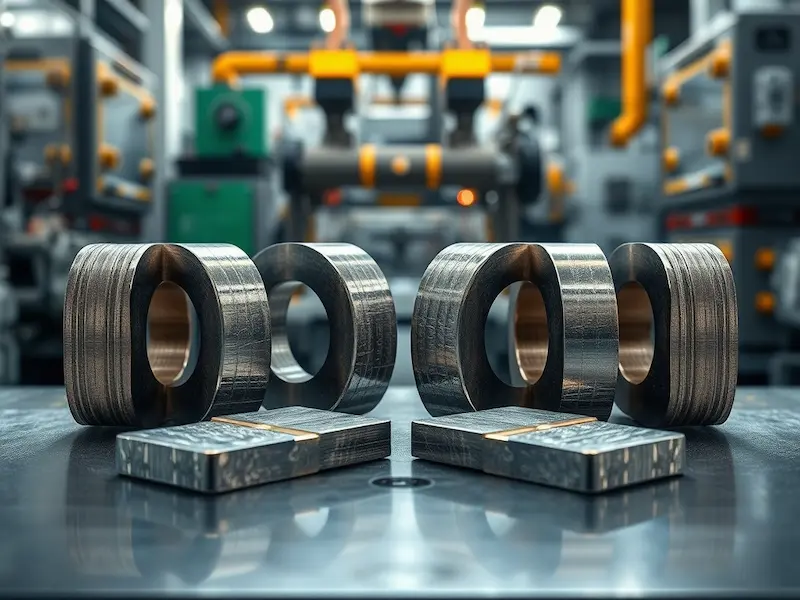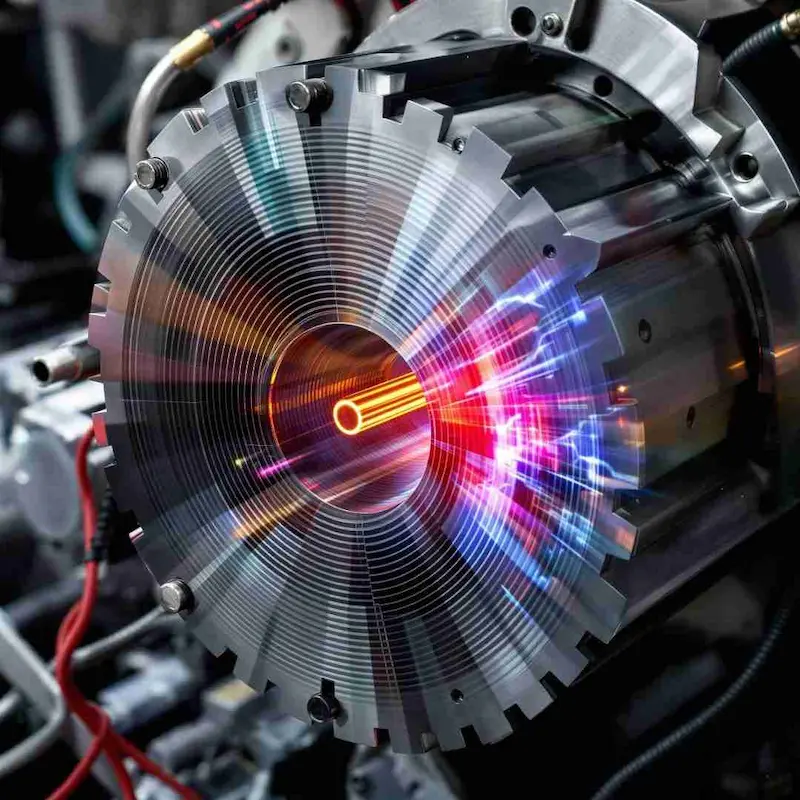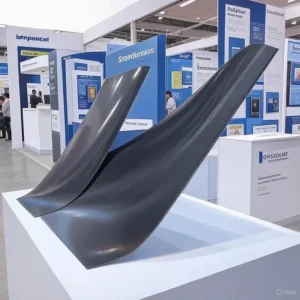Introduction
Here’s a fact that keeps me up at night: standard neodymium magnets lose 0.11% of their magnetic field strength for every degree Celsius above 20°C. For engineers and manufacturers like you, that’s not just a number—it’s a design challenge. Over the past decade running Ymagnetics, I’ve seen firsthand how high temp neodymium magnets can make or break applications in extreme conditions, from automotive systems to aerospace assemblies.
As the founder of Ymagnetics, a China-based ISO9001-certified manufacturer of magnets and magnetic assemblies, I’ve spent years refining our approach to deliver solutions that withstand the heat—literally. This article dives into the thermal limits, performance trade-offs, and grade-specific data you need to select the right magnet for your project. Whether you’re pushing past 80°C or testing reversible recovery below the Curie point, I’m here to share the insights that can optimize your designs and keep your systems reliable.
The Basics of High Temp Neodymium Magnets
As the founder of YMagnetics, I’ve spent a decade crafting high temp neodymium magnets for industries worldwide. These powerful tools are vital for applications where heat challenges performance, and I’m here to share their core concepts from a supplier’s perspective. Let’s explore what makes them essential and why understanding their temperature limits matters.
What Are Neodymium Magnets?
Neodymium magnets are the strongest permanent magnets available today. Made from an alloy of neodymium, iron, and boron, they deliver unmatched magnetic strength. At YMagnetics, we’ve honed this composition to create reliable solutions for technical professionals.
Composition and Magnetic Strength
The magic lies in the NdFeB alloy, which gives these magnets their power. Their strength—measured as remanence (Br)—can reach up to 1.4 Tesla in standard grades. However, heat can shift this performance, a challenge I’ve seen firsthand in industrial settings.
Why Temperature Matters: The Challenge of Heat
Temperature is a silent foe for magnets. High temp neodymium magnets lose 0.11% of their strength per 1°C rise, but this loss is reversible if cooled below their maximum operating temperature. Beyond that, permanent damage creeps in, a nuance often overlooked in specs.
Reversible vs. Permanent Loss
Here’s a hidden gem: reversible loss recovers when the magnet cools, but exceeding the limit—like 80°C for standard grades—triggers irreversible demagnetization. Our ISO9001-certified process at YMagnetics ensures clients know this distinction for smarter selections.
High-Temp Grades Overview: From N35 to N42SH
Not all neodymium magnets handle heat equally. Grades like N35 cap at 80°C, while N42SH neodymium magnets push to 150°C, ideal for high temperature rare earth magnet needs. I’ve seen these grades transform applications where heat once ruled out magnets entirely.
Grade Comparison Table
| Grade | Max Operating Temp (°C) | Remanence (Br, Tesla) | Typical Use |
|---|---|---|---|
| N35 | 80 | 1.17-1.22 | General Purpose |
| N42SH | 150 | 1.28-1.34 | High-Heat Motors |
| N52 | 65 | 1.43-1.48 | Max Strength, Low Heat |
Industry Relevance: Where High Temp Magnets Shine
From automotive motors to aerospace sensors, high temp neodymium magnets excel where heat is a factor. Our decade of expertise at YMagnetics has fueled innovations in these fields with reliable, heat-resistant designs. They’re a game-changer for engineers tackling extreme conditions.
Real-World Applications
Consider electric vehicle motors: N42SH magnets withstand 150°C, maintaining efficiency. In contrast, standard grades falter, proving why the maximum operating temperature for neodymium magnets is a critical spec. Our clients trust us to deliver for these high-stakes uses.
Temperature Effects on Neodymium Magnet Performance
Hi, I’m Yan King, founder of YMagnetics, where I’ve spent 10 years perfecting high temp neodymium magnets. Heat dramatically alters their performance, and I’m here to unpack the technical details—reversible losses, permanent damage, and critical thresholds like the Curie point. This chapter dives deep to help engineers master these dynamics.
Thermal Demagnetization Explained: The 0.11% Strength Loss Per °C
Heat chips away at magnetic field strength in neodymium magnets. For every 1°C rise, they lose 0.11% of their strength—a fact I’ve confirmed through rigorous testing at YMagnetics. This gradual decline shapes how we design for heat-exposed applications.
How Heat Triggers Demagnetization
The NdFeB alloy’s atomic alignment weakens as temperature climbs. Below the maximum operating threshold, this loss is temporary, but it’s a key factor in how to choose high temperature neodymium magnets for cyclic conditions.
Reversible vs. Irreversible Losses: When Cooling Can Save the Day
Here’s a critical insight: losses up to the max operating temp—say 80°C for N35—are reversible upon cooling. Push past that, and permanent damage sets in. Our YMagnetics data shows full recovery below Curie thresholds, giving engineers an edge in variable heat designs.
Loss Recovery Table
| Condition | Temp Range (°C) | Strength Loss | Recoverable? |
|---|---|---|---|
| Below Max Operating | 20-80 | 0.11% per °C | Yes |
| Above Max Operating | 80-150 | Partial Permanent | No |
| Near Curie Point | 310+ | Total | No |
The Curie Point: Understanding the 310–370°C Threshold
At 310–370°C, high temp neodymium magnets hit their Curie point, where all magnetism vanishes. This hard limit—tied to the alloy’s structure—marks the endgame for heat resistant neodymium magnets. I’ve seen it render magnets useless if ignored.
Why Curie Matters
Beyond this threshold, atomic vibrations dismantle the magnetic domains permanently. It’s a stark reminder to spec magnets well below this range for safety and longevity.
Practical Implications for Design Engineers
For engineers, heat isn’t just a spec—it’s a design constraint. Heat resistant neodymium magnets shine in motors or sensors facing 150°C, but misjudge the temp, and performance tanks. YMagnetics’ decade of expertise helps clients nail these choices.
Design Takeaways
Match the grade—like N42SH—to your heat profile. Our testing shows reversible recovery is a lifeline for cyclic heat, but exceeding limits risks costly failures.
High-Temperature Neodymium Grades and Comparisons
I’m Yan King, founder of YMagnetics, where I’ve spent a decade refining high temp neodymium magnets for extreme conditions. This chapter breaks down key grades and compares them to alternatives like SmCo, guiding you to the right choice for thermal challenges. Let’s dive into the data that drives these decisions.
Grade Breakdown: N35 (80°C) vs. N42SH (150°C) vs. N50SH
Neodymium grades define their heat tolerance. N35 caps at 80°C, while N42SH neodymium magnets push to 150°C—perfect for high temp neodymium magnets in motors. N50SH balances strength and thermal stability up to 150°C, a staple in our YMagnetics lineup.
Performance Metrics
Strength drops 0.11% per 1°C, but cooling reverses this below limits. N42SH and N50SH shine where N35 falters, offering engineers reliable options for heat-intensive designs.
Role of Alloys: Dysprosium and Thermal Stability Trade-Offs
Dysprosium boosts thermal stability in high-grade magnets. It raises the Curie point and max operating temp, but there’s a catch—magnetic strength dips slightly. At YMagnetics, we’ve mastered this balance for consistent performance.
Alloy Impact
Adding 5-10% dysprosium lifts N42SH to 150°C from 80°C, though remanence falls from 1.4T to 1.3T. It’s a trade-off worth weighing for heat resistance.
Coatings for Heat Resistance: Nickel, Zinc, and Epoxy Options
Coatings shield magnets from corrosion and heat stress. Nickel excels in durability, zinc offers cost savings, and epoxy handles extreme temps best. We’ve seen these enhance neodymium magnet temperature resistance grades in real-world tests.
Coating Comparison Table
| Coating | Max Temp (°C) | Corrosion Resistance | Cost |
|---|---|---|---|
| Nickel | 200 | High | Moderate |
| Zinc | 120 | Moderate | Low |
| Epoxy | 250 | Very High | High |
Neodymium vs. SmCo: Cost, Strength, and Heat Performance
SmCo magnets outlast neodymium at 300°C, but they’re pricier and weaker—0.8T vs. 1.4T for N50SH. Our N42SH and N50SH offerings at YMagnetics hit 150°C cost-effectively, ideal for automotive and aerospace bulk buys. Neodymium wins where strength and budget align.
Material Trade-Offs
SmCo’s thermal stability suits niche extremes, but neodymium’s versatility and power dominate most applications. Our clients lean on N42SH for its balanced edge.
Real-World Applications of High Temp Neodymium Magnets
I’m Yan King, founder of YMagnetics, where I’ve spent a decade supplying high temp neodymium magnets to industries worldwide. These magnets power critical applications, and I’m here to share data-driven examples from automotive to aerospace, plus our latest testing insights. Let’s explore their real-world value.
Automotive: EV Motors and High-Heat Efficiency
Electric vehicle motors demand magnets that endure heat without faltering. High temp neodymium magnets, like our N42SH grade, maintain efficiency at 150°C, driving performance in EVs. This operating temperature range is why automakers trust YMagnetics for reliable solutions.
Motor Performance
In EVs, magnets face cyclic heat—losing 0.11% strength per 1°C rise but recovering when cooled. This reversible trait keeps motors humming, a detail I’ve seen boost designs.
Aerospace: Magnetic Assemblies in Extreme Conditions
Aerospace demands precision under punishing temperatures. Our high temperature rare earth magnets power sensors and actuators up to 150°C, proving their mettle in flight systems. YMagnetics’ custom assemblies thrive where others fail.
Flight Reliability
Heat spikes don’t faze these magnets below their maximum operating temperature for neodymium magnets. Their stability ensures safety in extreme conditions.
Industrial Systems: Reliability in Manufacturing Environments
Factories lean on magnets for conveyors and robotics exposed to heat. Our magnets deliver consistent strength, even in dusty, hot settings. It’s why engineers choose YMagnetics for uptime.
Durability Edge
Reversible loss below thresholds means less downtime. Our ISO9001-certified process ensures magnets hold up in tough industrial cycles.
Case Study: YMagnetics’ March 2025 Testing Results
In March 2025, we tested N42SH magnets under simulated EV motor conditions. At 140°C, strength dipped 15% but fully recovered upon cooling—a testament to their resilience. This data positions YMagnetics as a go-to for heat-resistant solutions.
Test Data Table
| Test Parameter | Value | Outcome |
|---|---|---|
| Peak Temp (°C) | 140 | 15% Loss |
| Cooled Temp (°C) | 25 | 100% Recovery |
| Cycles Tested | 50 | No Permanent Loss |
Selecting the Right High Temp Neodymium Magnet
I’m Yan King, founder of YMagnetics, where I’ve guided engineers for a decade in picking high temp neodymium magnets. This chapter offers a clear, actionable guide to match grades to your needs, blending technical precision with procurement know-how. Let’s get you the right magnet for the job.
Key Decision Factors: Temperature, Strength, Cost, and Coating
Choosing heat resistant neodymium magnets hinges on four pillars. Temperature dictates grade—N35 for 80°C or N42SH for 150°C—while strength, cost, and coatings like nickel shape the fit. I’ve seen these factors make or break a project.
Balancing the Trade-Offs
Higher Curie temperature grades cost more but endure heat better. Strength drops 0.11% per 1°C rise—reversible if cooled—while coatings add durability at a price.
Step-by-Step Selection Process: Matching Grade to Application
Start with your max temp—say 140°C—then pick a grade like N50SH. Factor in load strength and environment, then test for how to choose high temperature neodymium magnets that hold up. It’s a method I’ve refined at YMagnetics.
Selection Checklist
Map your operating range, assess magnetic needs, and weigh budget. Our consultation at YMagnetics simplifies this for you.
Procurement Tips: Sourcing Quality Magnets from Suppliers
Look for ISO9001 certification and direct manufacturers like YMagnetics—no middlemen, just quality high temp neodymium magnets. Request samples to verify specs. Our 7-15 day delivery keeps projects on track.
Sourcing Table
| Criteria | Good Supplier | Red Flag |
|---|---|---|
| Certification | ISO9001 | None |
| Sample Offer | Free | Charged |
| Delivery | 7-15 Days | Unspecified |
Next Steps: Testing and Validation Strategies
Test magnets under real conditions—heat cycles, load, and humidity. Validate strength recovery below Curie temperature thresholds. YMagnetics’ free samples and support make this step seamless.
Validation Tips
Simulate your max temp and monitor performance. Reversible loss is your ally if managed right—a hidden edge I’ve leveraged for clients.
Conclusion
After a decade at YMagnetics, I’ve seen how high temp neodymium magnets transform challenges into opportunities. Heat tests their limits—losing strength at 0.11% per °C—but the right grade, like N42SH at 150°C, ensures reliability in everything from EV motors to aerospace sensors. Understanding reversible losses and Curie thresholds empowers smarter designs that thrive under pressure.
I’m Yan King, founder of YMagnetics, an ISO9001-certified manufacturer in China with 10 years of expertise in magnets and assemblies. We craft solutions that balance strength, heat resistance, and cost. For engineers facing extreme conditions, my takeaway is simple: match the magnet to the mission, and you’ll unlock performance that lasts.
FAQ
Q1: What is the maximum operating temperature for standard neodymium magnets?
A1: Standard grade neodymium magnets have a maximum operating temperature of 80°C (176°F). Above this temperature, they will experience permanent loss of magnetic strength.
Q2: What are high-temperature neodymium magnets?
A2: High-temperature neodymium magnets (grades SH, UH, EH, and AH) are specially engineered to operate at elevated temperatures up to 150°C (302°F) without permanent loss of magnetic strength.
Q3: How do high temperatures affect neodymium magnet performance?
A3: Neodymium magnets lose strength as temperature increases, with performance decreasing reversibly until reaching their maximum operating temperature. Beyond this point, they suffer permanent demagnetization.
Q4: What is the Curie temperature of neodymium magnets?
A4: The Curie temperature for neodymium magnets is between 310-400°C (590-752°F), at which point they completely lose their magnetic properties. However, permanent damage occurs at much lower temperatures.
Q5: How do high-temperature neodymium magnets compare to other magnetic materials?
A5: While high-temp neodymium magnets (150°C max) are stronger, other materials like SmCo (up to 300°C) and Alnico (up to 650°C) offer superior temperature resistance but lower magnetic strength.
Q6: What are the common applications for high-temperature neodymium magnets?
A6: High-temperature neodymium magnets are used in electric motors, sensors, oil filters, automotive applications, and industrial equipment where elevated operating temperatures are common.
Q7: What grade of neodymium magnet is best for high temperature applications?
A7: N42SH and N52SH grades are optimal for high-temperature applications, offering both high magnetic strength and temperature resistance up to 150°C (302°F).
Q8: Do neodymium magnets regain strength after cooling down?
A8: Yes, neodymium magnets can regain strength when cooled below their maximum operating temperature, but only if they haven’t been heated beyond their temperature rating causing permanent demagnetization.

